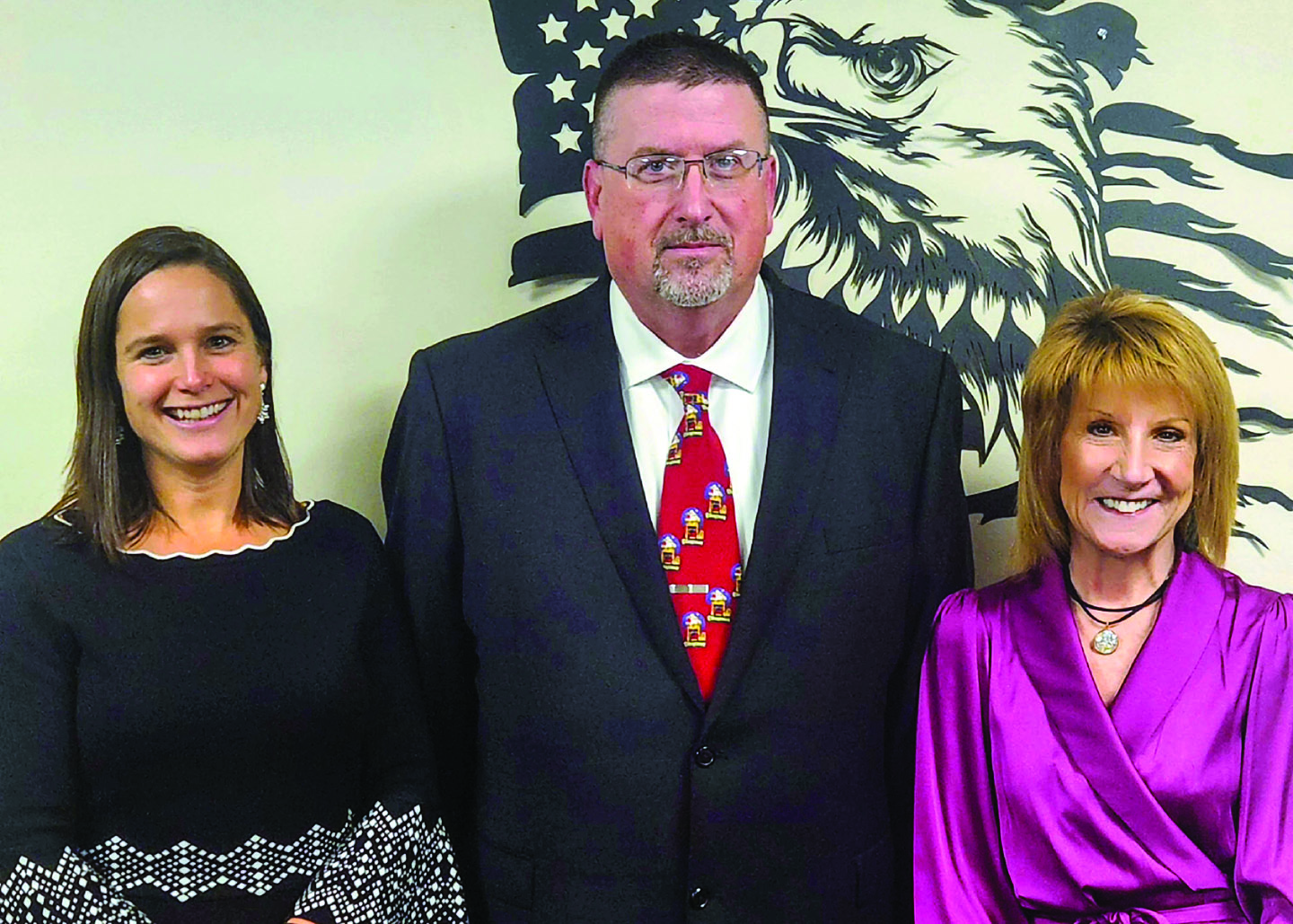
Clay County Veterans Service officer Curt Cannon with colleagues Jennifer Conklin (at left) and Kim Harr, help the county’s 5,000 military vets sort through issues with their benefits, as well as personal challenges.
Nancy Edmonds Hanson
Clay County is home to some 5,000 veterans of the U.S. military. All have served their country. Yet, says veterans service officer Curt Cannon, every one is different. His mission: Sorting through their eligibility for benefits and their needs to get them the federal and state benefits to which they are entitled.
“When we can assist a veteran in understanding and finally receiving their benefits, it’s a reward in the highest degree,” Cannon reflects. “You talk to guys who don’t know what to do. No health care. They’re going to lose their job or their house, maybe … and here, we may be able to get them a lifetime of health care or a resource to help pay their rent or utility bill.
“There’s no bigger kick than that – knowing we’ve helped someone get what the benefits that they have coming.”
Cannon, who received the city’s MoorHeart Award in November for outstanding service, is coming close to his 10-year anniversary of working with area veterans. “I was born for this job,” he reflects. “I was an Air Force brat. Our family lived all over, from Virginia to Italy.” He graduated from high school in North Carolina shortly before moving with his family to Grand Forks Air Force Base.
He enrolled in Valley City State University, where he played basketball while earning a degree in business administration. Midway through his college days, he joined the North Dakota Army National Guard as a combat medic. When he and his new wife Yvonne moved to southern Minnesota for her first teaching job. In the small town of Clarksville, he says, there were few jobs for business admin grads. Instead, he enrolled in what’s now Ridge water College in Will mar to study nursing; he graduated as an LPN in 1993, going to work at Montevideo Hospital and volunteering with the Clark field Ambulance.
He went on to manage assistant living facilities in Rebekah and Park Rapids, Minnesota, at the same time continuing in a Minnesota-based Guard unit, the 1-175 Field Artillery in Montevideo. After retiring as an 04 major in 2014, he was drawn to working with veterans. His initial post was Minnesota’s Link Vet office in Per ham, answering veterans’ questions on the Linkage line. A year later, the Clay County Commission hired him as its veterans service officer.
“Every veteran has a different story … different issues that need to be addressed,” Cannon says of his role in Moorhead. “‘No’ is not in our vocabulary here. We’re here to find them answers in all kinds of scenarios with all the resources we can find, internal or external.”
The range of benefits available to the veterans of the U.S. Army, Air Force, Navy, Marines and Coast Guard is vast and changing – so vast that many who have served their country know of many of them. That’s the mission of Cannon and his colleagues, vets service representative Jennifer Colin and administrative assistant Kim Hart. Working in a small office on the main floor of the Family Service Center, they talk with a steady stream of callers and visitors, each with questions about how they can steer them to the services they have earned.
Health benefits are at the top of that list, Cannon says, especially for the older veterans who seek their help, but much more may be available, depending on eligibility: among them, support for housing, education, vocational rehabilitation, employment and financial or personal counseling.
Beyond the more well-known benefits available from the U.S. Veterans Administration is a wide range specific to Minnesotans. Those include educational assistance for vets, spouses and children; short-term financial assistance for veterans and spouses; property and income tax exemptions for veterans; employment assistance through the Minnesota Veterans Preference Act; free hunting and fishing licenses; special license plates and free drivers licenses; and a property tax exclusion for 100% disabled vets and sometimes their survivors.
“The first issue is to find out whether they are eligible,” Cannon explains. When a veteran comes to them about disability benefits to which they think they’re entitles, his team tackles the paperwork that may support that claim. That can mean tracking down their clients’ military discharge papers, service treatment records, personnel files, and medals and awards. They prepare the claim that’s submitted to the Veterans Administration, where the federal staff reviews the records, orders evaluation exams and ultimately makes the decision.
One of the VSO’s achievements is particularly timely as winter sets in: There are no homeless veterans in Clay County. “Identified” veterans, that is. “We know there could be some who we don’t know about,” he admits. “We’re always on the look-out for those who haven’t come to us. They may not even know about all the assistance they are eligible for.” He keeps an eye out for possible veterans among those asking for money on city sidewalks or standing at intersections, ready to approach them to find out more.
Cannon reports, “What do we hear the most from our vets? ‘There’s benefits I never heard of!’
“Jennifer, Kim and I work every day to build awareness in the community and get that story out to our veterans,” he adds. “Even after 10 years, I feel like I have more to learn. Each case is another chance to learn something else that will help others.
“It’s a great day when I know that one more veteran’s life is going to be easier because of the services we provide.”
For more information on veterans’ benefits and resources available through the Clay County Veterans Service Office, call 218-299-5041 or visit claycountymn.gov/341/Veterans-Services


